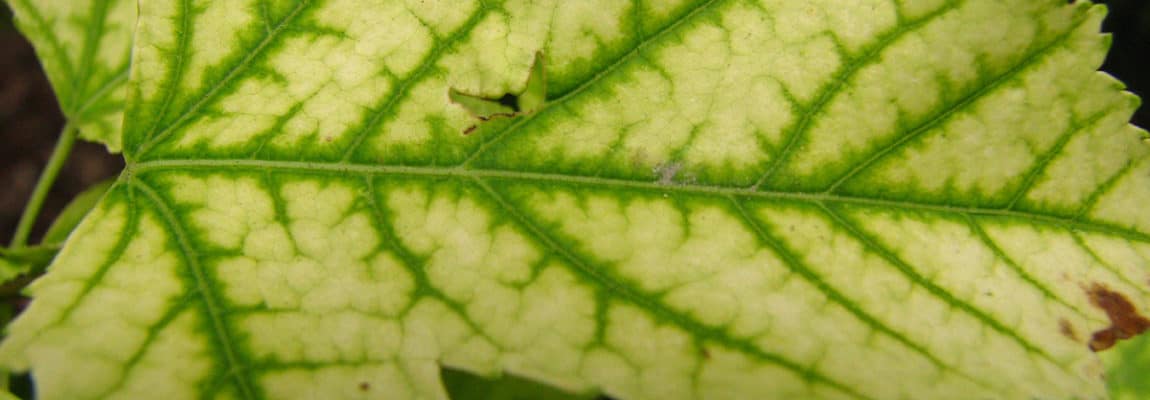This spring, certain trees and shrubs have yellowing in the leaves, in some cases the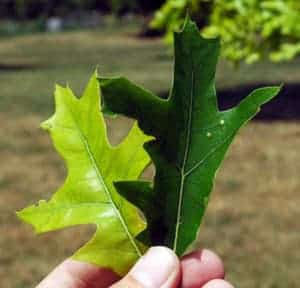 entire leaf or possibly around the edges. Pin oaks and other trees are a lighter green or yellow on certain branches or throughout the entire tree.
entire leaf or possibly around the edges. Pin oaks and other trees are a lighter green or yellow on certain branches or throughout the entire tree.
There are several possibilities for these new developments:
Damaged Root Systems –
The 14-month drought in 2017-2018 stressed plants in our landscapes in ways we cannot see. In spite of our watering efforts, root systems were compromised. It is not truly understood how far roots of any given tree or shrub reach out. Roots that reached further than expected were stressed or may have died from lack of moisture. Then, once the rains came, these damaged roots needed to regenerate, adding to the stress of the plant.
Iron Deficiency –
Chlorosis is a term referring to yellowing in leaves but is usually associated with iron or minor nutrient deficiency. It is characterized by yellowing between veins.
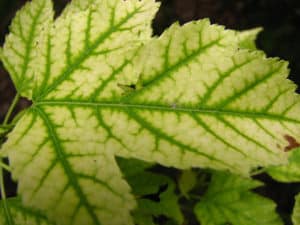 Iron deficiency can be brought about for many reasons, including damaged root systems. Commonly, it is from too high or too low a pH in the soil. Iron is most available at 6.0-6.5. Our soils in mid-Missouri often run above 7.0, tying up much of the available iron and other minor nutrients. Here are a few options on correcting this problem:
Iron deficiency can be brought about for many reasons, including damaged root systems. Commonly, it is from too high or too low a pH in the soil. Iron is most available at 6.0-6.5. Our soils in mid-Missouri often run above 7.0, tying up much of the available iron and other minor nutrients. Here are a few options on correcting this problem:
Foliar feeding gets iron right to the leaf where it can be absorbed quickly. Apply a liquid fertilizer containing iron or Liquid Iron, though it may leave a rusty residue on the leaves. This is only a temporary solution.
Adjusting the soil pH is another option. Applying sulfur will lower the pH, allowing the iron to be more available to the root system. This also is a temporary solution as the sulfur will eventually be used up. Also, adjusting the pH for one plant may affect others in the area that prefer our lime-based soil.
Wrong Plant-Wrong Place (opposite of right plant, right place) can be part of th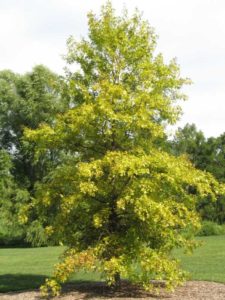 e problem. There is a new mantra going around among Missouri horticulturists, “Plant an Oak, but not a Pin Oak!” because most pin oaks are usually not planted where they want to grow, in the rich acidic soils of bottomland. If faced with a mature pin oak showing signs of chlorosis, sprinkle soil sulfur around the root zone and water in with Liquid Iron. Longfellow’s carries both products.
e problem. There is a new mantra going around among Missouri horticulturists, “Plant an Oak, but not a Pin Oak!” because most pin oaks are usually not planted where they want to grow, in the rich acidic soils of bottomland. If faced with a mature pin oak showing signs of chlorosis, sprinkle soil sulfur around the root zone and water in with Liquid Iron. Longfellow’s carries both products.
Good growing conditions are always the answer to most plant problems. Sufficient organic matter in the soil, a 2-4″ layer of mulch, and deep thorough watering during dry times will buffer iron deficiency and many other issues.
Excessive Moisture –
Not only can heavy rains wash away the nitrogen in the soil, heavy moisture also increases soil microbial activity. Once last year’s drought ended in October, soil microbes that were dormant during the drought exploded, gobbling up as much organic matter as possible. That process requires extra nitrogen, often stealing it from the plant.
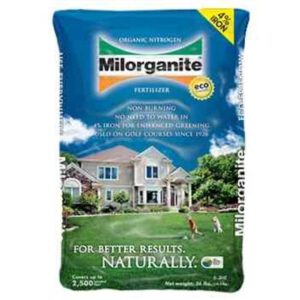 One Solution to Yellowing of Trees and Shrubs –
One Solution to Yellowing of Trees and Shrubs –
When yellowing is present, add a light dose of a quick-release form of nitrogen, in liquid or granulated form. We recommend Milorganite, an organic fertilizer containing mostly nitrogen and iron, a perfect solution for the conditions we are seeing this year.

